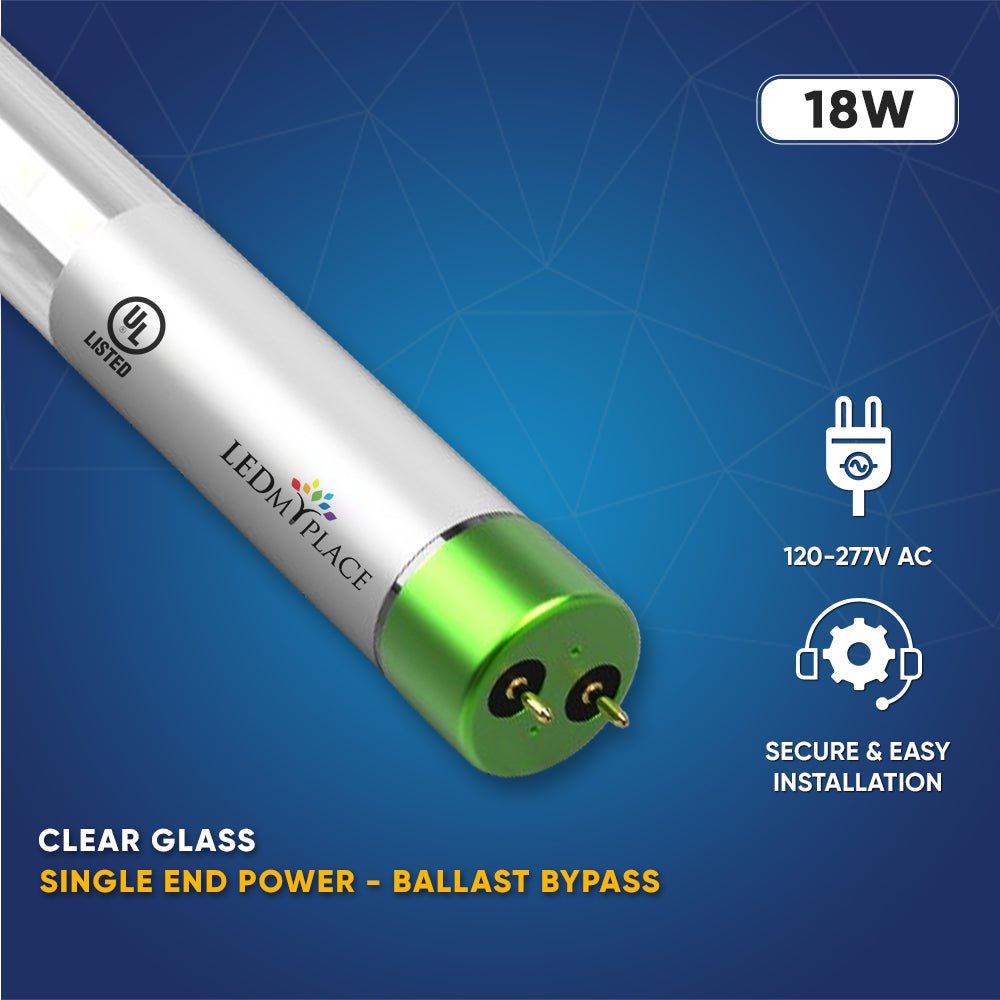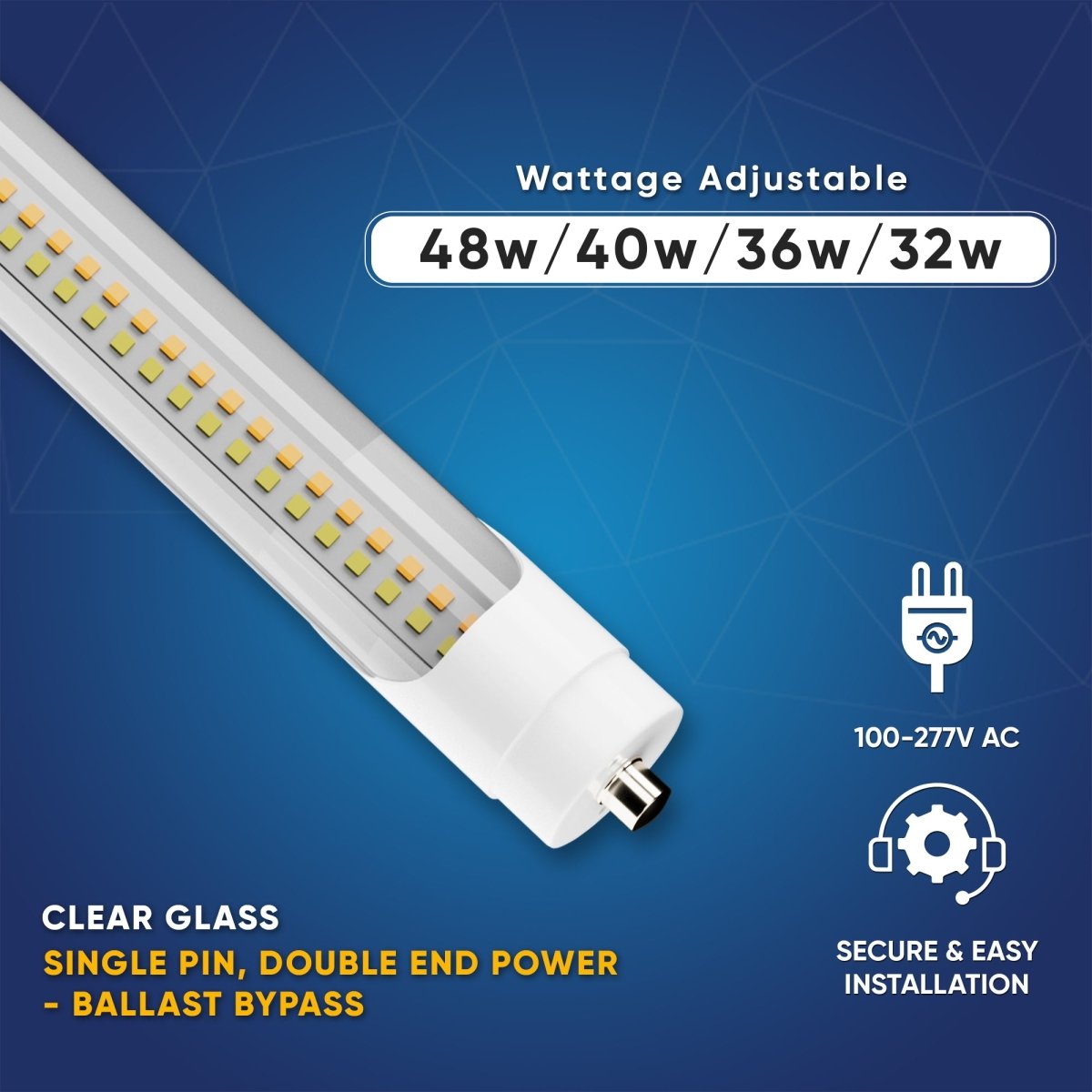Switching from fluorescent to LED lighting is becoming increasingly popular, thanks to the energy efficiency, long lifespan, and improved light quality of LED bulbs. However, one common question arises: What happens if you put LED bulbs in a fluorescent fixture? In this blog, we'll break down the key considerations, focusing on T8 LED bulbs, and explain how to make the switch effectively.
Understanding Fluorescent Fixtures and LED Compatibility
Fluorescent fixtures are designed to work with fluorescent tubes that rely on ballasts to regulate current and ignite the gas within the tube. However, T8 LED bulbs work differently—they use Light Emitting Diodes, which don't require gas or ballasts. When replacing fluorescent tubes with LED bulbs, you must consider compatibility to ensure safety, efficiency, and optimal performance.
Can You Directly Replace Fluorescent Tubes with LED Bulbs?
The answer depends on the type of T8 LED bulb you choose. There are three main types of LED tubes:
1. Plug-and-Play (Ballast-Compatible) T8 LED Bulbs
- How They Work: These bulbs are designed to work with the existing fluorescent ballast.
- What Happens: If your fixture’s ballast is compatible, the LED bulb will work without any additional wiring or modification. However, if the ballast is old or incompatible, the bulb may not function or could flicker.
- Pros: Easy installation; no rewiring needed.
- Cons: Continued reliance on the ballast, which may fail over time.
2. Direct-Wire (Ballast-Bypass) T8 LED Bulbs
- How They Work: These bulbs require you to bypass or remove the ballast, connecting the bulb directly to the power source.
- What Happens: Once the ballast is bypassed, the LED bulb functions perfectly, providing energy-efficient and stable lighting.
- Pros: Eliminates the need for a ballast; reduces maintenance costs.
- Cons: Requires some rewiring, which may need professional help.

3. Hybrid T8 LED Bulbs
- How They Work: These versatile bulbs can operate with or without a ballast.
- What Happens: Initially, they can work with the ballast, but when the ballast fails, you can bypass it without needing to replace the bulb.
- Pros: Flexible solution that adapts to different setups.
- Cons: Slightly more expensive than other options.
Key Benefits of Switching to T8 LED Bulbs
If you're considering putting LED bulbs in a fluorescent fixture, here are some compelling reasons to make the switch:
- Energy Savings: LED bulbs use significantly less energy compared to fluorescent tubes.
- Longer Lifespan: LED bulbs can last up to 50,000 hours, reducing the frequency of replacements.
- Improved Light Quality: LEDs offer brighter, more natural light with options for warm or cool tones.
- Eco-Friendly: Unlike fluorescent bulbs, LEDs are free of harmful chemicals like mercury.
Things to Keep in Mind Before Switching
- Check Compatibility: Ensure the LED bulb matches your fixture’s ballast or decide if you’re ready for rewiring.
- Understand Voltage Requirements: T8 LED bulbs usually work on standard line voltage (120-277V).
- Hire a Professional: If you’re unsure about wiring, it’s best to consult an electrician for safe installation.
- Dispose Fluorescent Bulbs Safely: Fluorescent tubes contain mercury and must be recycled responsibly.
Conclusion
Switching to T8 LED bulbs in a fluorescent fixture can be a seamless process if you choose the right type of LED bulb and ensure proper installation. While plug-and-play bulbs offer convenience, direct-wire options eliminate reliance on aging ballasts for long-term efficiency. The upgrade not only reduces energy consumption but also enhances lighting quality, making it a smart investment for homes and businesses.
Looking to make the switch? Explore a wide range of T8 LED bulbs at LEDMyplace and transform your lighting setup with ease!
























































































